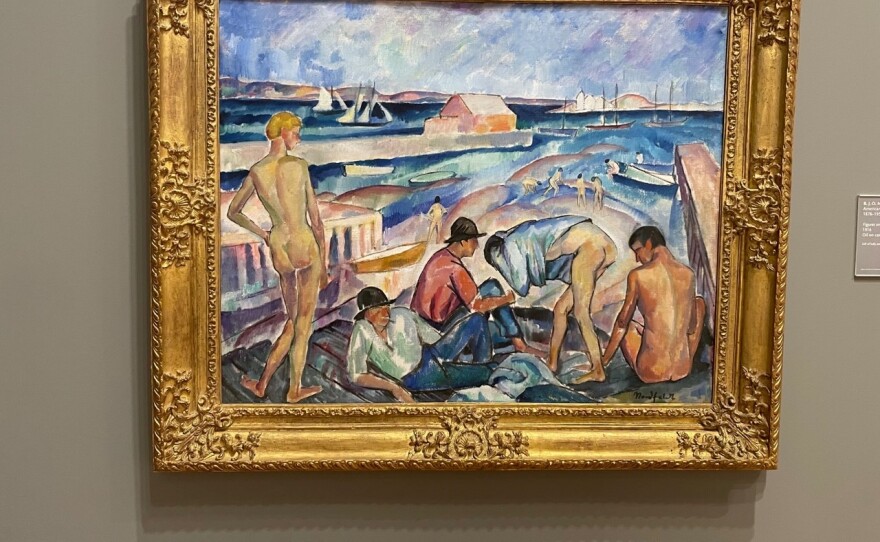Among Cape Cod’s remarkable attributes is a way of surfacing when and where you least expect it – associations, affiliations, allusions, connections, a single degree of separation among strangers.
So when I was in Atlanta, Georgia, I should have expected a few Cape curveballs to slide across my plate. But when they did, once again I was surprised.
The High Museum of Art in downtown Atlanta (High is a family name rather than a description of the work), is the city’s flagship museum with an eclectic collection.
On the second of five floors is a room showcasing American art from the early 20th century. I was trying to slow down and appreciate each piece, not glaze over, when one of many rectangles caught my eye; “Figures on the Beach, Provincetown.”
I had never seen the painting nor heard of painter B.J.O. Nordfeldt, who rendered it in 1916. It wasn’t a masterpiece, but surely evoked this place.
Why was it hanging on a rarefied wall in Atlanta?
It seemed to be offering a tip of the hat, acknowledgment that a collection of American art from 100 years ago should include something from Provincetown.
I ran a check on Nordfeldt. After serving in World War One he showed up among an emerging artist group but didn’t stay long and spent much of his life in the Southwest. He gets some credit for initiating what became a distinctive Provincetown form, white line printing.
OK, a fun Cape moment in the American South. Cool. Move on.
I meandered room to room, moving forward in time, when it happened again. This time the piece was not Cape Cod evocative, but the artist was:
“The Flowers” was painted around 1958 by Robert Vickrey.
I met Vickrey in Orleans where he lived for a long time until his death in 2011. He was a practitioner of “egg tempera”; he mixed egg yolks with pigment to make his colors and medium. It was the dominant European technique for centuries, supplanted by oil painting in the 1500s. That Vickrey employed it was in keeping with his personality — educated, curmudgeonly, proudly unconventional yet also traditional.
From the 1940s to the 1960s Vickrey appeared in Time Magazine, a big deal then, portraits and sketches of movie stars, royalty, the famous, for example a cover of reclusive writer J.D. Salinger.
He accepted only a few private commissions, one for Speaker of the House Thomas P. “Tip” O’Neill, who swung by from his place in Harwich to sit (actually stand) for Vickrey in Orleans. That portrait, unveiled in 1986, resides in the permanent collection of the U.S. House of Representatives.
It was fun invoking home once again while standing in a museum in Atlanta, again pondering the question:
Why is a small Robert Vickrey tucked into a world-class show displayed in Georgia?
Maybe the best answer is yet more proof of Cape Cod’s proclivity for showing up.










